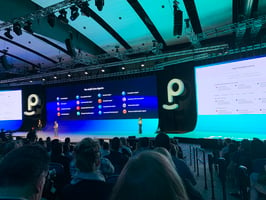What I Learned At IAMPHENOM 2023
You may have heard that Phenom held their IAMPHENOM conference last week in Philadelphia.

This is part three of a series of posts based on what I learned at the IAMPHENOM conference.
In March 2020, the IAMPHENOM Conference was the last significant in-person HR Conference before the COVID shutdown. Three years later, the return of IAMPHENOM in 2023 is a key milestone in the return to normalcy and a reminder of how important the human connection can be.
During the conference, I ran into a client who had recently been promoted into a new role responsible for the management of the Phenom TXM platform. We saw each other on Day 2, and he had already participated in several training sessions and workshops with other companies using the platform. When I asked him “How’s it going?” his response was something like this:
“Oh my god, I am so glad I came here, there are so many things we didn’t do right, I cannot wait to get back and fix everything!”
If heads could spin, his would have been. It also struck me that I’d had a similar experience about 30 years ago…
Circa 1992 and I had just inherited the responsibility for a very expensive applicant tracking system (Resumix, if anyone reading is old enough to remember), and it was about as useful to us as a boat anchor. I went to Resumix’ annual user group meeting in Silicon Valley and was ready to get our money back. After listening to several presentations from other practitioners who shared how they were killing it with the same tech as us, I quickly realized we must be doing something wrong. It was an epiphany that made it clear to me that technology alone does not solve problems. It is what you do with the technology that can solve problems and drive a return on investment. Shortly after this experience, we became a showcase client and I was delivering presentations at the next user group.
Making peer-to-peer connections in a software user community is by far one of the best ways to elevate your results and it can also bolster your career.
Here are 4 key benefits that can be derived from peer-to-peer networking:
If you ever find yourself challenged with your technology solutions, remember that you are not alone. Someone else may have already blazed the same trail. Reach out and connect, and when you do find solutions be sure to share them and pay it forward. The stronger the community, the better our collective results.
Get updates and learn from the best

You may have heard that Phenom held their IAMPHENOM conference last week in Philadelphia.

This is part five of a series of posts based on what I learned at the IAMPHENOM conference.

Five hot takes from IAMPHENOM2025